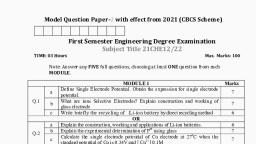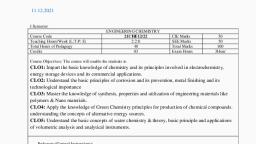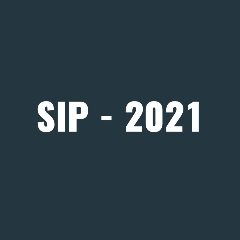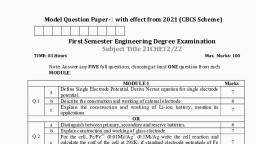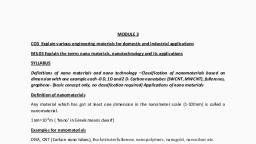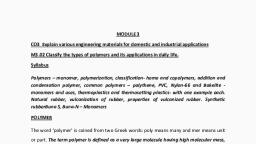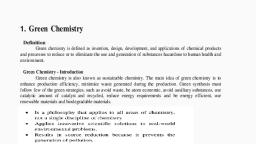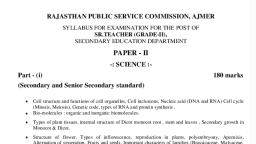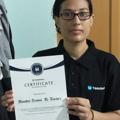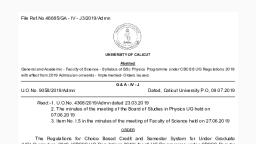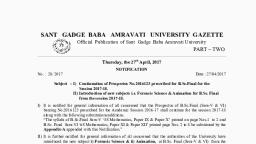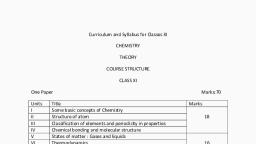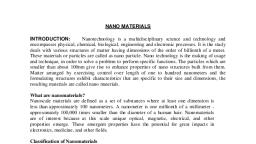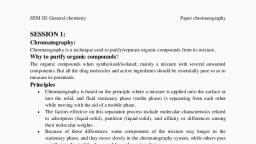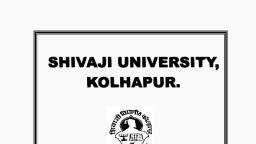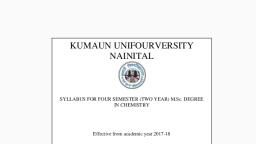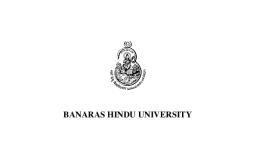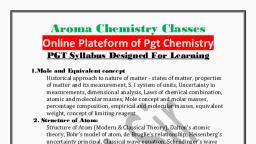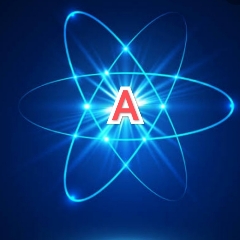Page 1 :
I/II Semester, ENGINEERING CHEMISTRY, Course Code, 21CHE12/22, Teaching Hours/Week (L:T:P: S), 2:2:0, Total Hours of Pedagogy, 40, Credits, 03, , CIE Marks, SEE Marks, Total Marks, Exam Hours, , 50, 50, 100, 3Hour, , Course Objectives: The course will enable the students to, CLO1: Impart the basic knowledge of chemistry and its principles involved in electrochemistry,, energy storage devices and its commercial applications., CLO2: Understand the basic principles of corrosion and its prevention, metal finishing and its, technological importance, CLO3: Master the knowledge of synthesis, properties and utilization of engineering materials like, polymers & Nano materials., CLO4: Apply the knowledge of Green Chemistry principles for production of chemical compounds., understanding the concepts of alternative energy sources., CLO5: Understand the basic concepts of water chemistry & theory, basic principle and applications, of volumetric analysis and analytical instruments., , Pedagogy (General Instructions):, These are sample Strategies, which teacher can use to accelerate the attainment of the various course, outcomes., 1. Lecturer method (L) does not mean only traditional lecture method, but different type of teaching, methods may be adopted to develop the outcomes., 2. Show Video/animation films to explain methods of synthesis of nanomaterials., 4. Encourage collaborative (Group Learning) Learning in the class, 5. Ask at least three HOTS (Higher order Thinking) questions in the class, which promotes critical, thinking, 6. Adopt Problem Based Learning (PBL), which fosters students’ Analytical skills, develop thinking, skills such as the ability to evaluate, generalize, and analyse information rather than simply recall, it., 7. Topics will be introduced in a multiple representation., 8. Show the different ways to solve the same problem and encourage the students to come up with, their own creative ways to solve them., 9. Discuss how every concept can be applied to the real world - and when that's possible, it helps, improve the students' understanding., Module-1, Electrochemistry and energy storage systems:, Electrochemistry: Introduction, EMF of cell, Free Energy, Single electrode potential-Derivation of, Nernst equation, Numerical problems based on Nernst Equation (E, E o & Ecell)., Reference Electrodes: Introduction, construction, working and applications of calomel electrode, ion, selective electrodes: Introduction, construction, working and applications of Glass electrode,, determination of pH using Glass electrode., Energy storage Systems: Introduction, Classification of batteries (primary, secondary and reserved, batteries). Construction, working and applications of Li-ion batteries. Advantages of Li-ion battery as, 1
Page 2 :
an electrochemical energy system for electric vehicles. Recycling of Lithium-ion batteries by direct, cycling Method. Brief introduction of Na- ion battery., Teaching, Learning, Process, , Electrochemistry and energy systems-chalk and talk method, power point presentation., Practical topic: Determination of pKa value of weak acid using glass electrode., Energy storage Systems-Power point presentation, youTube videos for Li-ion battery, construction and working., Self-study material: Construction and working of classical batteries like Zn-MnO 2 and, Pb-PbO2 batteries, , Module-2, Corrosion and Metal finishing:, Corrosion and it’s control:, Introduction, Electrochemical theory of corrosion, Factors affecting the rate of corrosion: ratio of anodic, to cathodic areas, nature of corrosion product, nature of medium – pH, conductivity and temperature., Types of corrosion - Differential metal and differential aeration (pitting and water line). Corrosion, control: Anodizing – Anodizing of aluminum, Cathodic protection - sacrificial anode and impressed, current methods, Metal coatings – Galvanization. Corrosion Penetration Rate (CPR), numerical, problems on CPR., Metal finishing: Introduction, technological importance. Electroplating: Introduction, Electroplating, of chromium (hard and decorative). Electroless plating: Introduction, distinction between, electroplating and electroless plating processes. Electroless plating of copper., Teaching, Learning, Process, , Chalk and talk method and power point presentation - Electrochemical theory of, corrosion, Factors affecting the rate of corrosion, Types of corrosion and corrosion, control. Technological importance. Electroplating: Introduction, principle governing, electroplating, polarization, decomposition potential and over voltage. Videos:, Electroplating of chromium, electroless plating of Nickel and copper, Self-learning material: Organic coatings: Paint, components of paints and their, functions. Varnish, definition, differences between paints varnishes., Module-3, , Engineering Materials, Polymers: Introduction, Synthesis and applications of Polyurethanes. Polymer compositesIntroduction, synthesis, properties & applications of Kevlar Fibre,, Conducting Polymers: Introduction, Synthesis & Mechanism of conduction in polyaniline and factors, influencing conductivity of organic polymers., Biodegradable polymers: Introduction and their requirements. Synthesis, properties and applications, of Poly lactic acid., Nanomaterials:, Introduction, size dependent properties (Surface area, Electrical, Optical and Catalytic properties)., Synthesis of nanomaterials: Top down and bottom-up approaches, Synthesis by Sol-gel, and, precipitation method, Nanoscale materials: Fullerenes, Carbon nanotubes and graphenes –brief, Explanation, properties and applications., , 2
Page 3 :
Teaching, Learning, Process, , Chalk and talk method & Power point presentation - Polymers, Conducting Polymers,, Biodegradable polymers, nanomaterials, Practical topics: Synthesis of nanomaterials by precipitation method, , Self-learning material: Classification of polymers, nanomaterial synthesis by chemical, vapor deposition., Module-4, Green Chemistry and Alternative energy resources, Green Chemistry: Introduction, definition, Major environmental pollutants - Oxides Nitrogen, Sulphur, and Carbon (Mansion the impact of these pollutants on environment), Basic principles of green, chemistry -brief discussion on 12 principles of green chemistry., Various green chemical approaches – Microwave synthesis, Bio catalysed reaction (only explanation, with examples),, Solvent-free reactions- advantages and conditions, Synthesis of typical organic compounds by conventional and green route;, i), Adipic acid – Conventional synthesis from Benzene, Green synthesis from glucose., ii), Paracetamol- Conventional and Green synthesis from Phenol, Industrial applications of Green Chemistry, Green fuel: Hydrogen-production (Photo electrocatalytic and photo catalytic water splitting) and, applications in hydrogen fuel cells. Construction, working and applications of Methanol-Oxygen fuel, cell (H2SO4 as electrolyte)., Solar Energy:, Introduction, construction, working and applications of photovoltaic cell., Teaching, Chalk and talk/power point presentation - Basic principles of green chemistry, Learning, Videos: Various green chemical approaches,, process, Self-study material: Atom economy-synthesis of ethylene oxide and methyl, methacrylate. Advantages & disadvantages of photovoltaic cell., Module-5, Water Chemistry, chemical analysis and Instrumental methods of analysis, Water chemistry:, Introduction, sources and impurities in water, Potable water; meaning and specifications (as per WHO, standards), Hardness of water, types, determination of hardness using EDTA titration, numerical, problems on hardness of water. Definition of Biological oxygen demand (BOD) and Chemical, Oxygen Demand (COD), determination of COD of waste water sample and Numerical problems on, COD., Methods of Chemical Analysis:, Volumetric Analysis: Introduction, principles of titrimetric analysis, requirement of titrimetric, analysis, primary and secondary standards. Requirement of a primary standard solution, units of, standard solutions- Definition of normality, molarity, molality, mole fraction, ppm., Instrumental methods of analysis:, Introduction, Theory, Instrumentation and applications of Colorimetry, Flame Photometry,, Potentiometry, Conductometry (Strong acid with strong base, weak acid with a strong base, mixture, of strong acid and a weak acid with a strong base), Teaching Chalk and talk/power point presentation – principles of titrimetric analysis, requirement, of titrimetric analysis, Classification of titrimetric analysis, Ostwald’s theory of acid-base, 3
Page 4 :
Learning, process, , indicator taking phenolphthalein and methyl orange as examples. Instrumental methods of, analysis., Practical topic: Volumetric titrations, instrumental methods., Self-study material- Types of volumetric titrations (Neutralization, redox and, complexometric),, Course outcome (Course Skill Set), At the end of the course the student will be able to:, CO1: Discuss the electrochemical energy systems such as electrodes and batteries., CO2: Explain the fundamental concepts of corrosion, its control and surface modification methods, namely electroplating and electroless plating, CO3: Enumerate the importance, synthesis and applications of polymers. Understand properties, and application of nanomaterials., CO4: Describe the principles of green chemistry, understand properties and application alternative, fuels., CO5: Illustrate the fundamental principles of water chemistry, applications of volumetric and, analytical instrumentation., , 4
Page 5 :
Assessment Details (both CIE and SEE), The weightage of Continuous Internal Evaluation (CIE) is 50% and for Semester End Exam (SEE) is, 50%. The minimum passing mark for the CIE is 40% of the maximum marks (20 marks). A student, shall be deemed to have satisfied the academic requirements and earned the credits allotted to each, subject/ course if the student secures not less than 35% ( 18 Marks out of 50)in the semester-end, examination(SEE), and a minimum of 40% (40 marks out of 100) in the sum total of the CIE, (Continuous Internal Evaluation) and SEE (Semester End Examination) taken together, Continuous Internal Evaluation:, Three Unit Tests each of 20 Marks (duration 01 hour), 1. First test at the end of 5th week of the semester, 2. Second test at the end of the 10th week of the semester, 3. Third test at the end of the 15th week of the semester, Two assignments each of 10 Marks, 4. First assignment at the end of 4th week of the semester, 5. Second assignment at the end of 9th week of the semester, Group discussion/Seminar/quiz any one of three suitably planned to attain the COs and POs for 20, Marks (duration 01 hours), 6. At the end of the 13th week of the semester, The sum of three tests, two assignments, and quiz/seminar/group discussion will be out of 100 marks, and will be scaled down to 50 marks, (to have less stressed CIE, the portion of the syllabus should not be common /repeated for any of the, methods of the CIE. Each method of CIE should have a different syllabus portion of the course)., CIE methods /question paper is designed to attain the different levels of Bloom’s taxonomy as per, the outcome defined for the course., Semester End Examination:, Theory SEE will be conducted by University as per the scheduled timetable, with common question, papers for the subject (duration 03 hours), 1. The question paper will have ten questions. Each question is set for 20 marks., 2. There will be 2 questions from each module. Each of the two questions under a module (with a, maximum of 3 sub-questions), should have a mix of topics under that module., The students have to answer 5 full questions, selecting one full question from each module.y, , Suggested Learning Resources:, Books, 1. Uppal M.M, Jain and Jain. Engineering Chemistry, Khanna Publishers, 35 th Edition, 2013., 2. P.C. Jain and Monica Jain, A test Book of Engineering Chemistry, Dhanpat Rai Publications, New, Delhi, 12th Edition, 2012., 3. SS Dara & Dr. SS Umare. -A Text book of Engineering Chemistry, S Chand & Company Ltd., 12 th, Edition, 2011., 4. R.V. Gadag and Nitthyananda Shetty-A Text Book of Engineering Chemistry, I.K. International, Publishing house. 2nd Edition, 2016., 5

